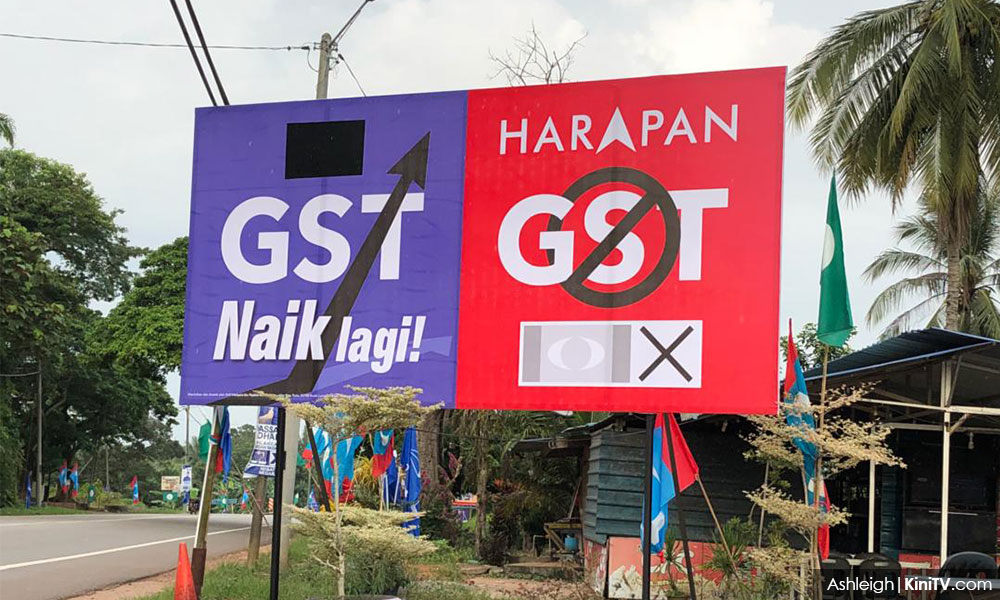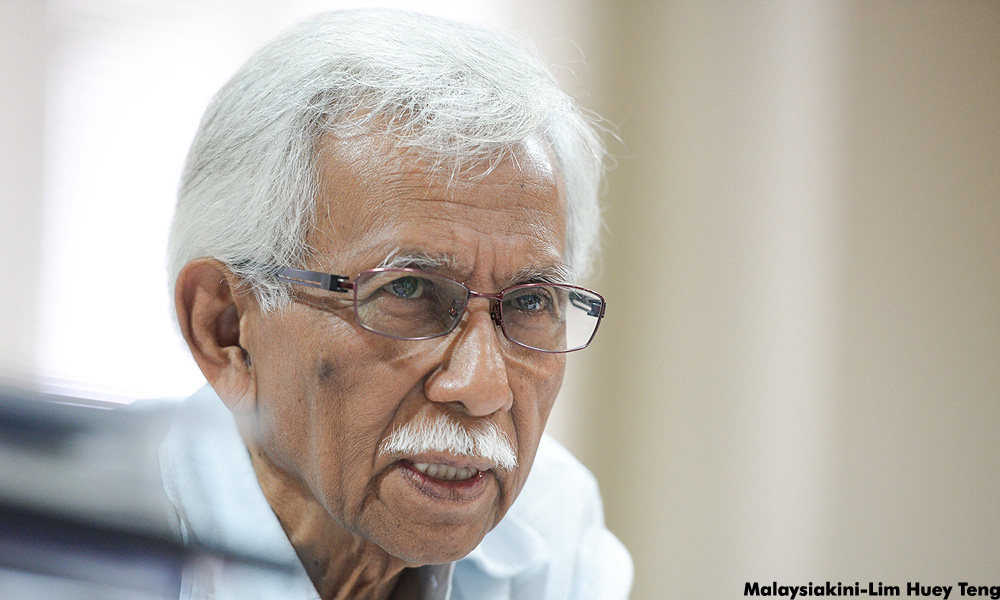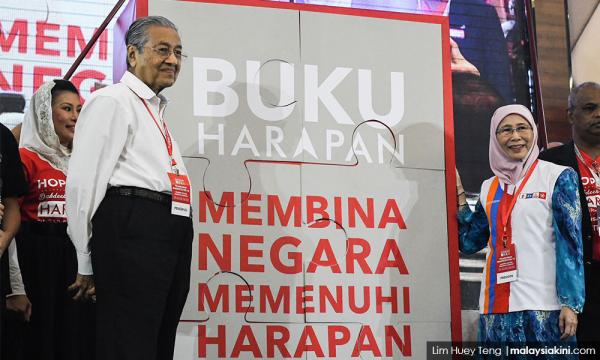COMMENT | With Pakatan Harapan’s win in the 14th general election, it seems almost sure that the GST, which was established three years ago by the now former Najib administration, will be abolished. But the question now is how to do it, and what the challenges are.
To ease the burden of cost of living pressures on Malaysian families, a less disruptive option is perhaps to reduce the GST rate, let’s say, to three percent, rather than abolishing it.
This will create an immediate effect of reducing the prices of goods and services almost across the board by three percent, while still collecting revenue roughly similar to what the previous sales and services tax (SST) regime would generate. There is also no need to overhaul the consumption tax system.
But merely reducing the rate may not be politically desirable for Harapan. In the lead up to the GE14, the then opposition coalition had been campaigning on the platform of abolishing the GST and it is their top priority within 100 days of taking office. Departing from that would be seen as a breach of promise and could backfire politically.
The new prime minister Dr Mahathir Mohamad had said that they would revert back to the SST regime. This is necessary because should the GST be abolished, it will create a big hole in the federal government’s fiscal position, amounting to RM43.8 billion in 2018.
The SST, with a revenue of RM17 billion in 2014 before it was abolished, can at least fill part of that gap.
Overhauling the tax system is never easy
While the GST can be abolished in a fairly straightforward manner by virtue of a bill approved by the Parliament, it is the reverting back to the SST process that will take some time and could potentially create teething troubles and confusion in the market.
This is also unprecedented because countries that adopted the GST, or otherwise known as the value-added tax (VAT), rarely reverse it and return to the old, inefficient sales tax regime.

It is important to remember that overhauling a tax system is never easy. We had witnessed that three years ago when the GST was introduced to replace the SST. Now Pakatan Harapan wants to reverse it. The process could be messy as well as backfiring on the new government if it is not well managed.
One major challenge of reverting back to the SST is to realign the tax base and tax rates. The tax base, which was widen under the GST, will now have to be narrowed. There will be questions: Which goods and services will still be taxed? What will no longer be taxed?
The tax rates also need to be adjusted. The old SST had varied rates of 5 to 15 percent for different product items; while under the GST, a standard rate of 6 percent is applied across the board, except for exempted or zero-rated items.
Standard rate or varied rates?
To bring back the SST, Harapan can opt to use the old regime, including the old tax base and tax rates. This will be relatively simple for businesses to adopt given that the institutional knowledge of the SST regime might still be there.
But this does not necessarily translate to lower prices across the board for consumers. Some goods might have a higher price (due to a higher SST rate), some prices will go down (due to a lower SST rate or no SST) and some might stay the same. This might not be in line with the people’s expectation to see the prices of goods and services to come down.

Furthermore, the price effects can also sometimes be murky. Some businesses may take this opportunity to profiteer, while there are also some genuine cases of hidden cascading effects caused by the SST which push up the prices. Many basic items are also not taxed under the GST regime, thus reversing back to the SST might not affect the prices of these items at all.
How to communicate this to the people is also a challenge. The former government failed particularly in this regard as it mismanaged the people’s expectation by promising that the prices will go down under the GST regime, while it was the opposite in reality.
Ultimately, the GST backfired on Najib administration in this election and this is certainly what Harapan wants to avoid.
To reduce any potential confusion, one option is to apply a standard SST rate, probably at the same rate of six percent with GST. This means any items that will still be taxed under the SST regime could maintain the more or less same price, while the reduction in consumer prices will be delivered through narrowing the tax base. But this will mean even lower revenue for the government because the top rate is reduced.
The government might also need to review the tax base because the economy has changed much since 2015. Airbnb, Grabcar and Netflix were not prominent then; but now they are. Certainly, a new SST regime could not afford to exclude them out of the tax base.
Unlikely to take effect within next 100 days
Despite how eager Harapan is, It is unlikely that the abolishment of the GST will take effect within the next 100 days. The new government will have to first table a bill to the Parliament and they can certainly do that within the next 100 days. But for the abolition to take effect, it will take at least a few more months, or probably a year.
When the GST was introduced, there was an 18 month lead time before it took effect. Reintroducing the SST probably needs less lead time than the former, but it will still require at least some months to prepare for roll-out, including for the Customs Department to realign the tax base, decide the tax rates and prepare guidance for businesses.
Businesses must also be given time to re-configure their accounting infrastructure so they can be SST ready.
Comprehensive fiscal reform
Harapan had also promised to come up with a comprehensive fiscal reform plan at the end of the first 100 days and any review of the GST should be part of it.

To do so, the new government has among the first things appointed a council of eminent persons, comprising of former finance minister Daim Zainuddin, former Bank Negara governor Zeti Akhtar Aziz, former Petronas president Mohd Hassan Merican, tycoon Robert Kuok, and economist Jomo Kwame Sundaram, which will serve as advisors to the government.
As mentioned before, abolishing the GST will leave a big hole in the government’s fiscal position and that will require further measures to balance the book.
While the new government could tap into Petronas’s reserve as a short term measure, and rely on the SST and reduce corruption and wastage over the medium term, it will require sustainable long term measures to raise more revenue to address rising costs of essential services such as healthcare, social welfare and education.
In many countries, a broad-based consumption tax like the GST is usually part of that long term fix because of the stable and sustainable revenue it could generate for the government.
The regressiveness of the GST can also be set off by a more progressive transfer system which protects the poor. One main problem of Najib’s administration was that widespread leakages and corruption of Umno and BN leaders including the 1MDB scandal rendered his administration no political credibility and legitimacy to implement the GST.
While Harapan has a strong mandate to reform, keeping the very unpopular GST is definitely the last thing they would want now.
WONG TECK CHI is a tax policy researcher.
The views expressed here are those of the author/contributor and do not necessarily represent the views of Malaysiakini.


